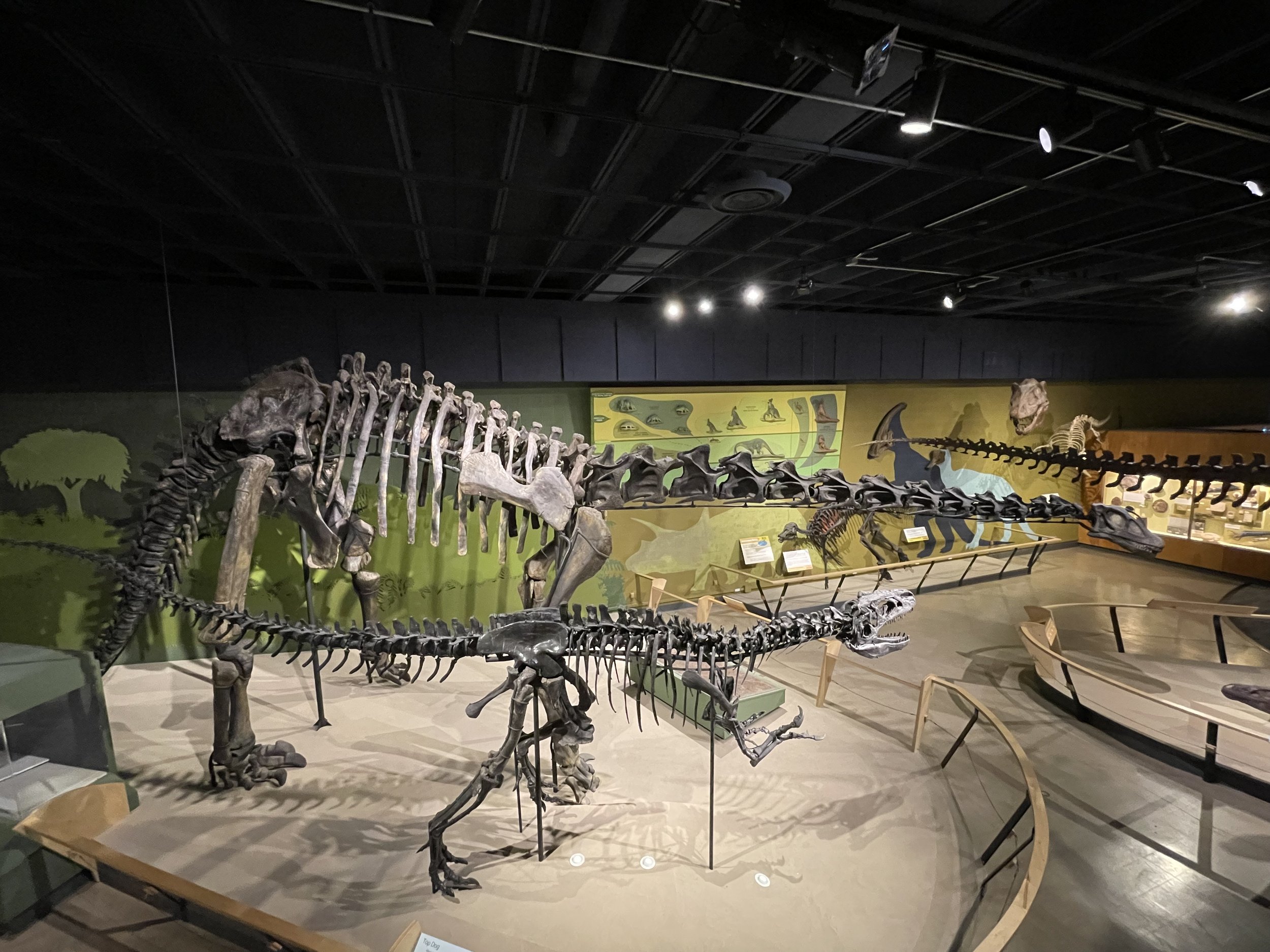Dinosaurs of the Morrison Formation Part I: Sauropods
Most of the dig sites that we work on are in the northern part of the Morrison Formation, a Jurassic-age rock formation known for its dinosaur fossils. This formation is about 145 million years old, right in the middle of the age of the dinosaurs. Stretching all the way from New Mexico to Canada, the Morrison contained a diverse environment that ranged from semi-arid savannahs to lakes and swamps. Based on the fossils we find here, we also know the Morrison ecosystem was full of some of the most impressive animals to ever walk the Earth. From giant sauropods to spiky stegosaurs, the dinosaur fauna of this formation includes some truly iconic animals. But there were plenty of other dinos that you may be less familiar with!
We will start our journey through the Morrison dinosaur family tree with the dinosaurs that made this formation famous: the giant long-necked sauropods. This group of dinosaurs first appeared in the late Triassic and evolved to dominate the Jurassic Period. Sauropods were the largest land animals ever known, and their skeletons show us plenty of unique adaptations to their massive size. Their vertebrae housed air sacs similar to modern birds, which would have lightened their skeletons and helped regulate the temperature of these giant herbivores.
The diets of sauropods varied from grazers to browsers, but all Morrison sauropods ate plants, and they needed to eat tons of plants to achieve their impressive adult sizes! Their skulls housed teeth that varied in shape from long pegs to broad flat slicing teeth depending on their age and species. Another suggested sauropod feeding adaptation was the use of gastroliths (“stomach stones”), which were rocks ingested by sauropods to help mechanically digest plants in their food. Identification of gastroliths can be difficult since they just look like normal rocks, but some potential gastroliths have been identified in the Morrison!
There are over a dozen recognized species of sauropods known from the Morrison Formation, and a couple of them have been found on BBPI’s dinosaur dig sites. So let’s meet some of these Jurassic giants!
Diplodocus
Juvenile Diplodocus based on a skull from MDQ. Art by Andrey Atuchin.
This massive sauropod was once the longest dinosaur known, with some reaching enormous sizes of 100 feet long! It is also one of the best known sauropods, thanks to plenty of fossilized skeletons and even preserved skin impressions! Its name means “double beam” after the distinctive structure of its vertebrae. Diplodocus also comprises the majority of the fossils found at the famous Mother’s Day Quarry, a large bone bed where BBPI has helped excavate a whole herd of juvenile to sub-adult sized Diplodocus.
Brachiosaurus
Brachiosaurus brancai. Art by Julius Csotonyi
One of the tallest sauropods, you may recognize this famous dinosaur from the “veggie-saurus” scene in Jurassic park! Its tall stature made this dinosaur perfectly adapted for browsing on tall trees, filling a giraffe-like niche in its environment. Although Brachiosaurus is rarely found in the Morrison, a close relative first thought to be Brachiosaurus was also discovered in similarly aged rocks in Tanzania. This relative was later determined to be a separate genus and was named Giraffatitan.
Suuwassea
Suuwassea emeliae. Art by Jason Poole.
A relatively small sauropod compared to its giant neighbors like Diplodocus and Brachiosaurus, Suuwassea is known from only a couple of specimens, including the beautifully preserved skeleton from our “Suu 2” site! The name Suuwassea is derived from the local Crow (Apsáalooke) language as a reference to the dinosaur’s discovery on Crow land and approximately translates to “ancient thunder”. It was closely related to other Morrison sauropods like Diplodocus and Apatosaurus, but its exact taxonomic relationship to these similar sauropods is not well understood. The small size of Suuwassea at about 15m long also reflects a trend of smaller dinosaurs in the northern Morrison as compared to the giants found in the better known Morrison deposits of Utah and Colorado.
Haplocanthosaurus
Haplocanthosaurus “Happy”. Cleveland Museum of Natural History.
There are two known species of Haplocanthosaurus, another relatively small Morrison sauropod. This dinosaur has been found across the formation, from the Bighorn Basin down to Colorado. The first known specimen of Haplocanthosaurus delfsi, the larger of the two Haplocanthosaurus species, was nicknamed “Happy” at its permanent home in the Cleveland Museum of Natural History. It is known from only a handful of specimens, and is one of the rarest species of sauropod in the Morrison formation!
Camarasaurus
Camarasaurus in a death pose. Carnegie Museum of Natural History.
With approximately 200 known skeletons and at least three known species, Camarasaurus is one of the better understood sauropods of the Morrison and the most common dinosaur in the whole formation! It was somewhat shorter and stouter than its diplodocoid relatives, and can be easily identified by its boxy skull. Camarasaurus was first named by early American paleontologist Edward Drinker Cope, but two other species were named by his contemporary Othniel Charles Marsh during their bitter rivalry known as “The Bone Wars”. Many other Morrison sauropods were discovered during this period, including Diplodocus.
Brontosaurus & Apatosaurus
Brontosaurus. Art by Daniel Eskridge.
The beloved long-necked Brontosaurus has been the subject of one of the oldest controversies in paleontology. O. C. Marsh named the two Morrison sauropods Apatosaurus and Brontosaurus in the late 19th century, but in 1903 they were determined to be the same animal. The name Brontosaurus was declared invalid since Apatosaurus was named first, and this decision held up in the paleontological community while the name Brontosaurus was still used by the public for over 100 years. To make matters worse, Marsh also reconstructed Brontosaurus with the skull of a Camarasaurus since no skulls from Brontosaurus or Apatosaurus had been found! We now know that the skulls of these dinosaurs looked a lot more like the long skulls of Diplodocus than the boxy skulls of Camarasaurus. In 2015, a new paper was published that argued for Brontosaurus and Apatosaurus to be separate again, and they are now typically considered similar but separate genera.
Barosaurus
Barosaurus mount. American Museum of Natural History.
This giant sauropod was in many ways similar to its close cousin Diplodocus, but with some subtle differences in its skeleton such as its longer neck, shorter tail, and differently proportioned vertebrae. It was well adapted for feeding on the ground cover vegetation on the plains of the Morrison ecosystem. Like many of their relatives, Barosaurus also sported a whip-like tail which these sauropods may have used for defense or display. One specimen that has been referred to Barosaurus is mounted at the American Museum of Natural History in New York, and is the world’s tallest free-standing dinosaur skeleton mount!
That’s all for our introduction to some of the sauropods of the Morrison Formation, but come back soon for Dinosaurs of the Morrison Formation Part II, where you’ll meet the ferocious Jurassic carnivores that hunted the largest land animals in history!







